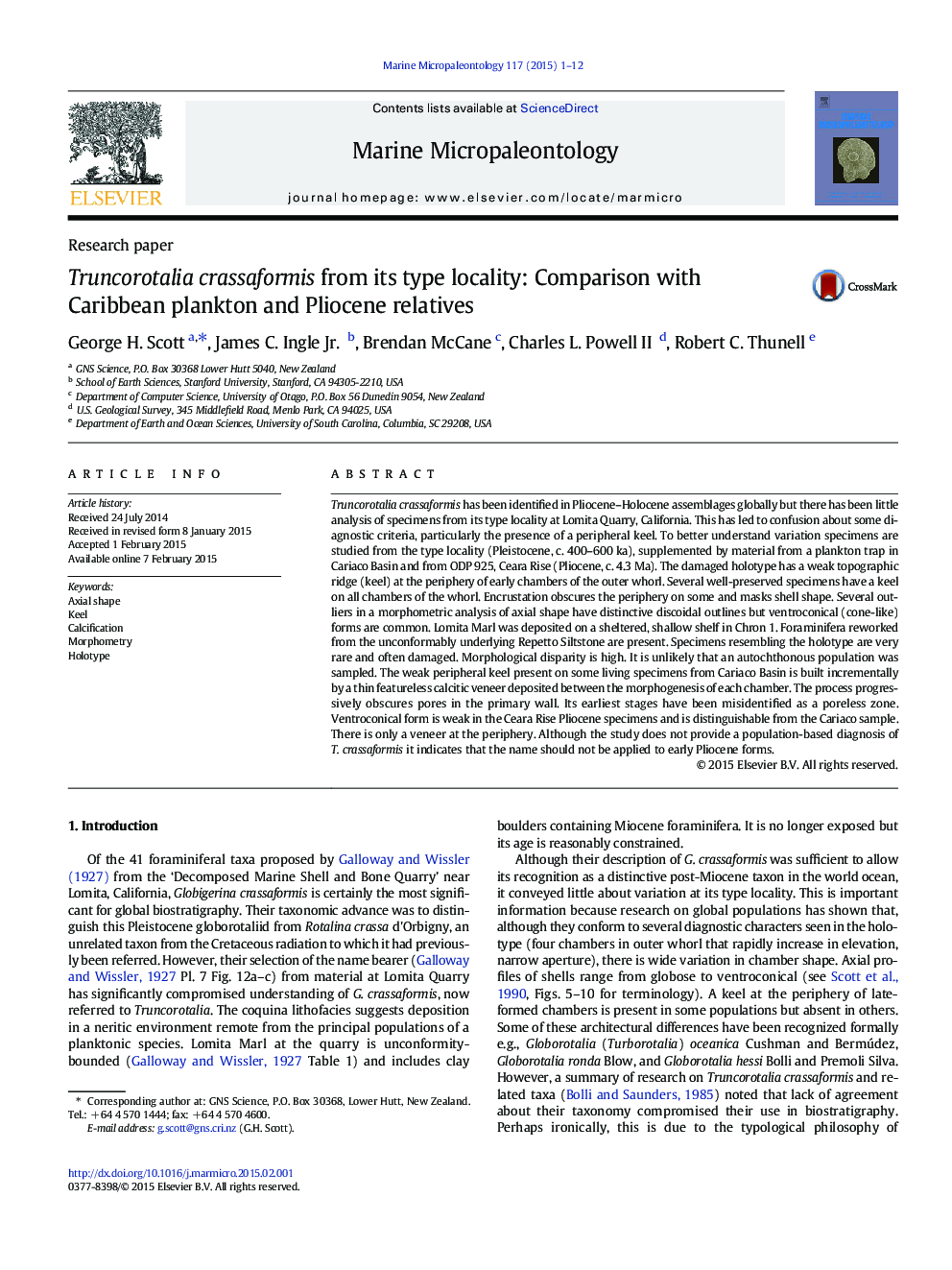| Article ID | Journal | Published Year | Pages | File Type |
|---|---|---|---|---|
| 6448545 | Marine Micropaleontology | 2015 | 12 Pages |
Abstract
Truncorotalia crassaformis has been identified in Pliocene-Holocene assemblages globally but there has been little analysis of specimens from its type locality at Lomita Quarry, California. This has led to confusion about some diagnostic criteria, particularly the presence of a peripheral keel. To better understand variation specimens are studied from the type locality (Pleistocene, c. 400-600Â ka), supplemented by material from a plankton trap in Cariaco Basin and from ODP 925, Ceara Rise (Pliocene, c. 4.3Â Ma). The damaged holotype has a weak topographic ridge (keel) at the periphery of early chambers of the outer whorl. Several well-preserved specimens have a keel on all chambers of the whorl. Encrustation obscures the periphery on some and masks shell shape. Several outliers in a morphometric analysis of axial shape have distinctive discoidal outlines but ventroconical (cone-like) forms are common. Lomita Marl was deposited on a sheltered, shallow shelf in Chron 1. Foraminifera reworked from the unconformably underlying Repetto Siltstone are present. Specimens resembling the holotype are very rare and often damaged. Morphological disparity is high. It is unlikely that an autochthonous population was sampled. The weak peripheral keel present on some living specimens from Cariaco Basin is built incrementally by a thin featureless calcitic veneer deposited between the morphogenesis of each chamber. The process progressively obscures pores in the primary wall. Its earliest stages have been misidentified as a poreless zone. Ventroconical form is weak in the Ceara Rise Pliocene specimens and is distinguishable from the Cariaco sample. There is only a veneer at the periphery. Although the study does not provide a population-based diagnosis of T. crassaformis it indicates that the name should not be applied to early Pliocene forms.
Keywords
Related Topics
Physical Sciences and Engineering
Earth and Planetary Sciences
Palaeontology
Authors
George H. Scott, James C. Jr., Brendan McCane, Charles L. II, Robert C. Thunell,
